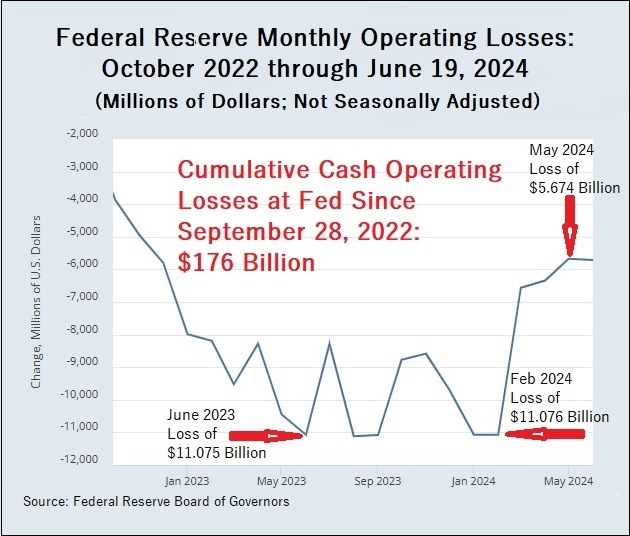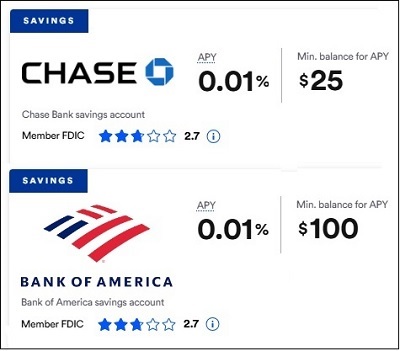by Pam Martens and Russ Martens, Wall St On Parade:

According to Federal Reserve data, for the first time in its history, the Fed has been losing money on a consistent monthly basis since September 28, 2022. As of the last reporting date of June 19, 2024, those losses add up to a cumulative $176 billion. As the chart above using Fed data shows, the losses thus far in 2024 have ranged from a monthly high of $11.076 billion in February to a low of $5.674 billion in May.
These losses are separate and distinct from the unrealized losses the Fed is experiencing on the debt securities it holds on its balance sheet. It does not mark those losses to market since it intends to hold the securities to maturity and their principal is guaranteed at maturity by the U.S. government.
TRUTH LIVES on at https://sgtreport.tv/

The losses shown in the above chart are actual cash operating losses that result from the fact that the Fed is earning significantly less interest on its debt securities than the high rates of interest the Fed is paying out to depository banks on their reserves held at the Fed; to mutual funds on its reverse repo operations; and in dividend payments to the banks that are shareowners of the 12 regional Fed banks.
Interest on Reserve Balances (IORB): 5.40 Percent
Since July 27 of last year, or one month shy of a year, the Fed has been paying 5.40 percent interest on reserve balances held by banks at the Fed. A significant part of that generous payout has been going to megabanks like JPMorgan Chase and Bank of America. The graphic below, taken from BankRate.com this morning, shows that these megabanks aren’t passing along that generosity to their customers’ savings accounts, since those savings accounts continue to pay the preposterously low rate of 0.01 percent interest, despite 11 rate hikes by the Fed since 2022.
A detail that goes missing in mainstream media reports on this generous payout by the Fed is that the Fed and banking system were able to survive for 95 years without the Fed paying any interest on bank reserves. The Fed began paying interest on reserves at a time when the megabanks on Wall Street were in the process of imploding during their self-inflicted financial crisis of 2008 and needed every handout they could conjure up from the Fed. The Fed explains the origination of this policy as follows on one of its website pages from 2008:
“The Financial Services Regulatory Relief Act of 2006 originally authorized the Federal Reserve to begin paying interest on balances held by or on behalf of depository institutions beginning October 1, 2011. The recently enacted Emergency Economic Stabilization Act of 2008 accelerated the effective date to October 1, 2008.”
At the time Congress was pressured into passing this legislation by Wall Street sycophants, it was unaware that the Fed would be conducting three years of secret backroom bailout programs (2007-2010) that would eventually tally up to a cumulative $29 trillion, according to a detailed analysis by the Levy Economics Institute using data the Fed was eventually forced to release.
Reverse Repurchase (Repo) Agreement Operations (RRPs): 5.30 Percent
In addition to paying out 5.40 percent interest on bank reserve balances, the Fed has been paying the hefty rate of 5.30 percent on its reverse repo operations since July 28, 2023. (To track the interest rate the Fed has paid on its reverse repos, put your cursor on any point on the graph linked here.)
Read More @ WallStOnParade.com




